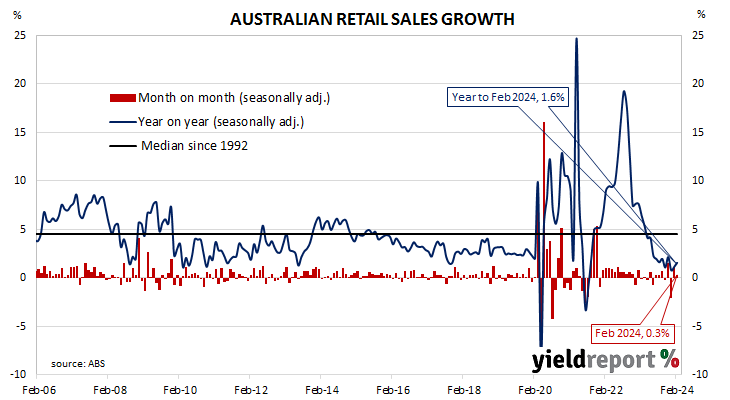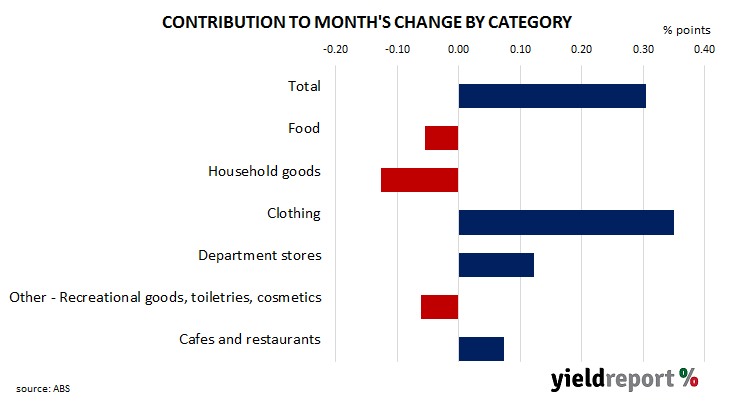Summary: Retail sales up 0.3% in February, slightly less than expected; up 1.6% on 12-month basis; Westpac: momentum still looks weak, trend growth tracking 0.1% per month; ACGB yields fall; rate-cut expectations soften; Westpac: overall picture remains consistent with lacklustre consumer environment; largest influence on result from clothing sales.
Growth figures of domestic retail sales spent most of the 2010s at levels below the post-1992 average. While economic conditions had been generally favourable, wage growth and inflation rates were low. Expenditures on goods then jumped in the early stages of 2020 as government restrictions severely altered households’ spending habits. Households mostly reverted to their usual patterns as restrictions eased in the latter part of 2020 and throughout 2021.
According to the latest ABS figures, total retail sales rose by 0.3% on a seasonally adjusted basis in February. The rise was slightly less than the 0.4% increase which had been generally expected and considerably less than January’s 1.1% gain. Sales increased by 1.6% on an annual basis, up from 1.2% after revisions.
“Looking through recent volatility, momentum still looks weak, trend growth tracking 0.1% [per] month and sales down 0.5% on a quarterly basis,” said Westpac senior economist Matthew Hassan.
Commonwealth Government bond yields moved lower on the day, lagging the falls of US Treasury yields overnight. By the close of business, the 3-year ACGB yield had lost 3bps to 3.55% while 10-year and 20-year yields both finished 4bps lower at 3.98% and 4.28% respectively.
In the cash futures market, expectations regarding rate cuts later this year softened. At the end of the day, contracts implied the cash rate would remain close to the current rate for the next few months and average 4.315% through April, 4.30% in May and 4.28% in June. However, August contracts implied a 4.17% average cash rate, November contracts implied 3.985%, while February contract implied 3.815%, 50bps less than the current rate.
“Overall, while there are some positives in the detail, the overall picture remains consistent with a lacklustre consumer environment,” added Hassan. “We suspect this will remain the case until cost-of-living pressures ease more materially and policy supports, tax cuts from July and interest rate cuts from September, come into play.”
Retail sales are typically segmented into six categories (see below), with the “Food” segment accounting for 40% of total sales. However, the largest influence on the month’s total came from the “Clothing” segment where sales rose by 4.2% over the month.



